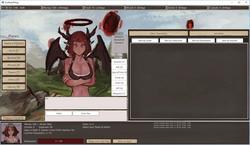

- #BREEDING SEASON 6.6.1. CHEATS HOW TO#
- #BREEDING SEASON 6.6.1. CHEATS FULL#
- #BREEDING SEASON 6.6.1. CHEATS CODE#
- #BREEDING SEASON 6.6.1. CHEATS SIMULATOR#
On August 15th, the official Breeding Season development blog was updated with a big sample of monster head variants that was added in the alpha build marked 6.5. Going back to mid-August of this year, we will take a look at all of the new content additions, revamps and more. Quite a bit of time has passed since we last looked at what the Breeding Season team has cooked up for its fans. LewdGamer takes a quick look at all the new changes and additions.
#BREEDING SEASON 6.6.1. CHEATS SIMULATOR#
Later in the exercise, we will create two new script called index.R and sak.R, which will store our actual function code.The sexy monster farming simulator Breeding Season has gone through a lot of content updates in the recent months.
#BREEDING SEASON 6.6.1. CHEATS CODE#
Do this now! Use this file to follow along the R code in this chapter. Open a new script file, and save it as chapter11.R.
#BREEDING SEASON 6.6.1. CHEATS HOW TO#
In the next chapter, we’ll show you how to put your two new function into an R package so that you can share your function with other Tauntaun biologists. Rather, we’ve selected this exercise as a means for teaching you how to create a function in R and how to loop through analyses using both looping methods and R’s set of “apply” functions. Our goal is not a treatise on population estimation methods (nobody really uses the index method). The original paper and worksheet outlining the method can be found on the Wisconsin Department of Natural Resources website. This model was developed by Lee Eberhardt in the 1960’s to estimate the population size of white-tailed deer. This method requires that user supplies the harvest rate and the harvest data, and the function will estimate the population size from these two inputs.Ī simple method called the Sex-Age-Kill model. There are several methods for analyzing the age-at-harvest data, and here we will use two.Īn index method. And if the population size is estimated each and every year, we can then look at trends in abundance through time, and think about what factors might affect this trend and how to manage it.
#BREEDING SEASON 6.6.1. CHEATS FULL#
( 2002) suggest, “Intriguingly nested within the age-at-harvest data is information on age and sex composition, survival, and fecundity rates.” In other words, our Tauntaun harvest data (which is full of records of dead animals of a particular age and sex) can be analyzed to estimate the size of the living Tauntaun population immediately before the harvest began. But what do they do with the data you have reported? The answer: they do a population analysis.Īs a trained wildlife biologist, you know that harvest data are just the beginning of a population analysis. The report itself was simply a summary of the number of harvested animals sliced and diced in multiple ways, submitted to the Fish and Wildlife Service. Hopefully your R markdown report will make this annual task a breeze.

10.3.9 Creating a Bibliography with Endnote.10.3.6 Paragraph 4: Analysis of Harvested Animals by Tauntaun Age and Sex.10.3.5 Paragraph 3: Hunter Demographics.10.3 Tauntaun Annual Report Outline and R Objects Needed (Section 2).10.1 HTML Markup vs. Markdown vs. R Markdown.7.8 Summarizing the Harvest with Aggregate.6.10 Read in the Hunter CSV file, and Save as hunter_clean.RData.6.9 Save the Cleaned Data as harvest_clean.RData.6.8 Stepping through Rows and Columns with Apply Functions.6.7.1 color = fur color of the reptomammalian Tauntaun.6.7 A Brief Interruption to Discuss NA and NULL.6.6.9 weight = weight of harvested animal (arbitrary units).6.6.8 length = length of harvested animal.

6.6.7 town = town in which the animal was harvested.6.6.4 individual = the unique identifier of each harvested animal.6.6.3 sex = the sex of the harvested animal.6.6.2 age = the age of the harvested animal.6.6.1 hunter.id = the unique hunter identification number.3.4.7 Function Names from Different Packages.2.3 The Files, Plots, Package, Help Pane.


 0 kommentar(er)
0 kommentar(er)
